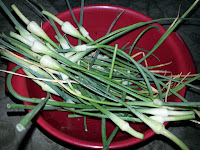Herbs are Easy

Herbs are so easy to grow they are among the plants that are ideal for young gardeners because they will have success from their first attempt. Winter protection helps herbs survive cold temperatures Herbs add scent in bouquets and their flavors create delicious beverages, salads, vegetables and meats that rival any restaurant fare. Patsy Wynn of Tulsa Herb Society said that since most herbs are ancient, they add history to the garden. Wynn said she cooks with basil, rosemary, thyme and oregano mostly. “Mediterranean herbs are the easiest to grow,” Wynn said. “Give them average soil, plenty of sun, a little fertilizer and average water. The biggest mistake is keeping them too wet.” Herbs and vegetables can be interspersed To create an easy-to-grow container, Wynn suggested an airy, tall, fennel plant for the middle, golden oregano or sage for the center and parsley or thyme for the low growing plants. Just be careful to not over-water. The kitchen herbs w



